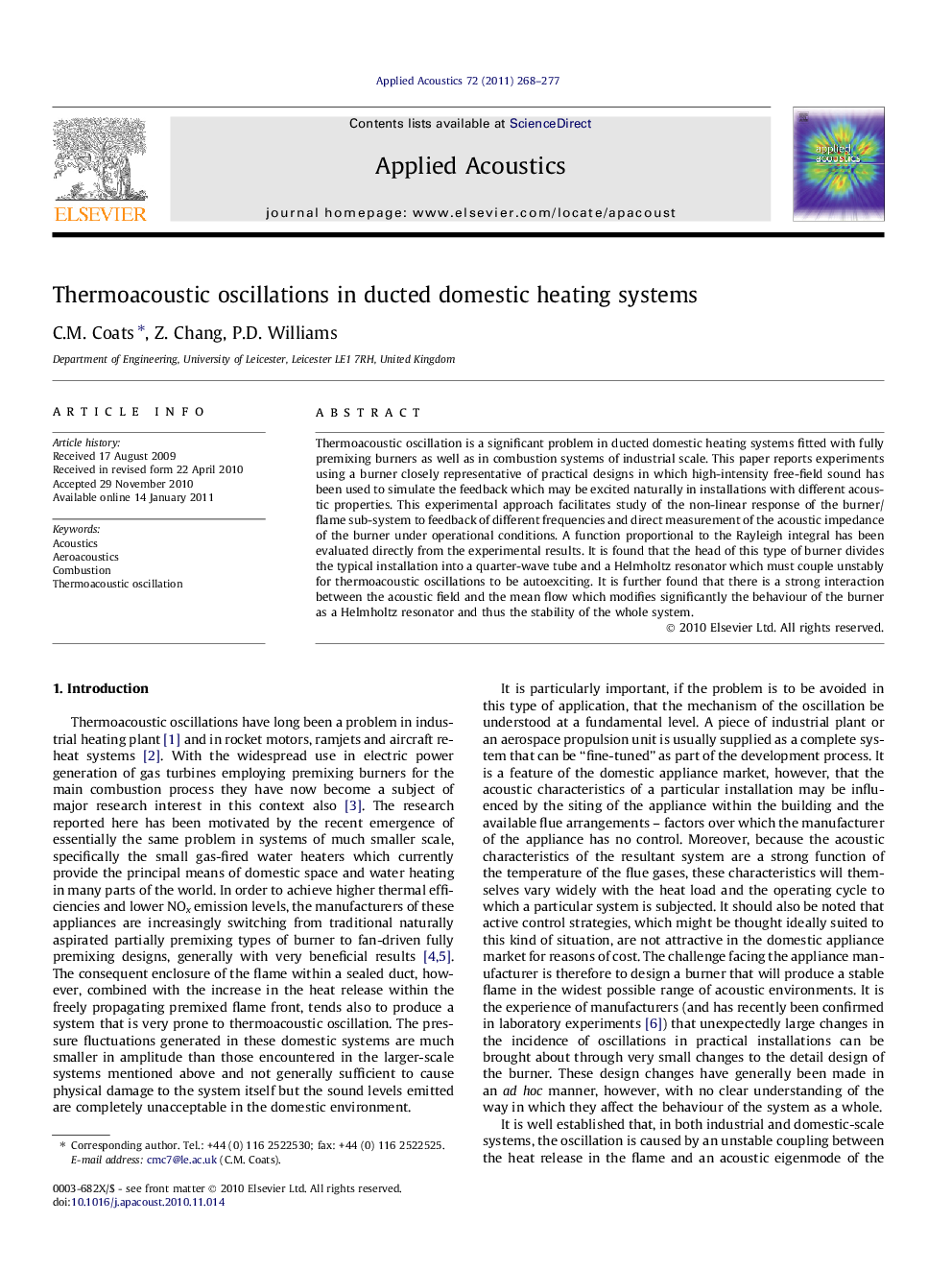| Article ID | Journal | Published Year | Pages | File Type |
|---|---|---|---|---|
| 753655 | Applied Acoustics | 2011 | 10 Pages |
Thermoacoustic oscillation is a significant problem in ducted domestic heating systems fitted with fully premixing burners as well as in combustion systems of industrial scale. This paper reports experiments using a burner closely representative of practical designs in which high-intensity free-field sound has been used to simulate the feedback which may be excited naturally in installations with different acoustic properties. This experimental approach facilitates study of the non-linear response of the burner/flame sub-system to feedback of different frequencies and direct measurement of the acoustic impedance of the burner under operational conditions. A function proportional to the Rayleigh integral has been evaluated directly from the experimental results. It is found that the head of this type of burner divides the typical installation into a quarter-wave tube and a Helmholtz resonator which must couple unstably for thermoacoustic oscillations to be autoexciting. It is further found that there is a strong interaction between the acoustic field and the mean flow which modifies significantly the behaviour of the burner as a Helmholtz resonator and thus the stability of the whole system.
